Digging Deep: A Thorough Website Comparison Analysis
Website comparison analysis plays a vital role in today's digital benchmarking. As the number of websites grows exponentially, it becomes increasingly challenging for individuals and businesses to make informed decisions about their competitors.
By evaluating multiple websites based on various criteria, such as performance, design, functionality, security, and content, businesses can know whether they need to enhance their strategy to defeat competitors.
Criteria for Website Comparison Analysis
When conducting a competitor website comparison analysis, it is important to evaluate various criteria to gain a comprehensive understanding of each website's strengths and weaknesses. Here are some key criteria to consider:
- User Experience: Assess the ease of navigation, intuitiveness of the interface, and overall user-friendliness of the competitor websites.
- Design and Visual Appeal: Evaluate the aesthetics, visual elements, and branding consistency of the competitor websites. Consider factors such as color schemes, typography, imagery, and overall design coherence.
- Performance and Speed: Analyze the loading times of competitor websites to gauge their efficiency. Evaluate factors such as page load speed, server response time, and overall website performance.
- Content Quality and Relevance: Evaluate the quality, accuracy, and relevance of the content on each competitor's website.
- Mobile Responsiveness: Assess how well each competitor's website adapts to different screen sizes and mobile devices. Analyze factors such as mobile layout, touch-friendly navigation, and overall mobile user experience.
- SEO: Evaluate each competitor's website's SEO practices. Assess factors such as meta tags, keyword usage, internal linking, and overall search engine visibility. Determine which website demonstrates strong SEO strategies and ranks well in search engine results.
How to Compare Competitor’s Websites
After knowing some key criteria to do website comparison analysis, now it’s time to do the comparison. Comparing competitors' websites involves a systematic approach to assess their strengths, weaknesses, and points of differentiation. Here’s how
Identify Your True Competitor
To identify your true competitors, you cannot just guess who they are. You have to pick them based on data. In the search engine, you can define whether they are your competitors or not by their target keywords.
Use the SEO website comparison tool to check your true competitor. You can use Sequence Stats to do more than that. You just need to track your keywords, and then you will know the competitors that target the same keywords. There you can find the true competitor.
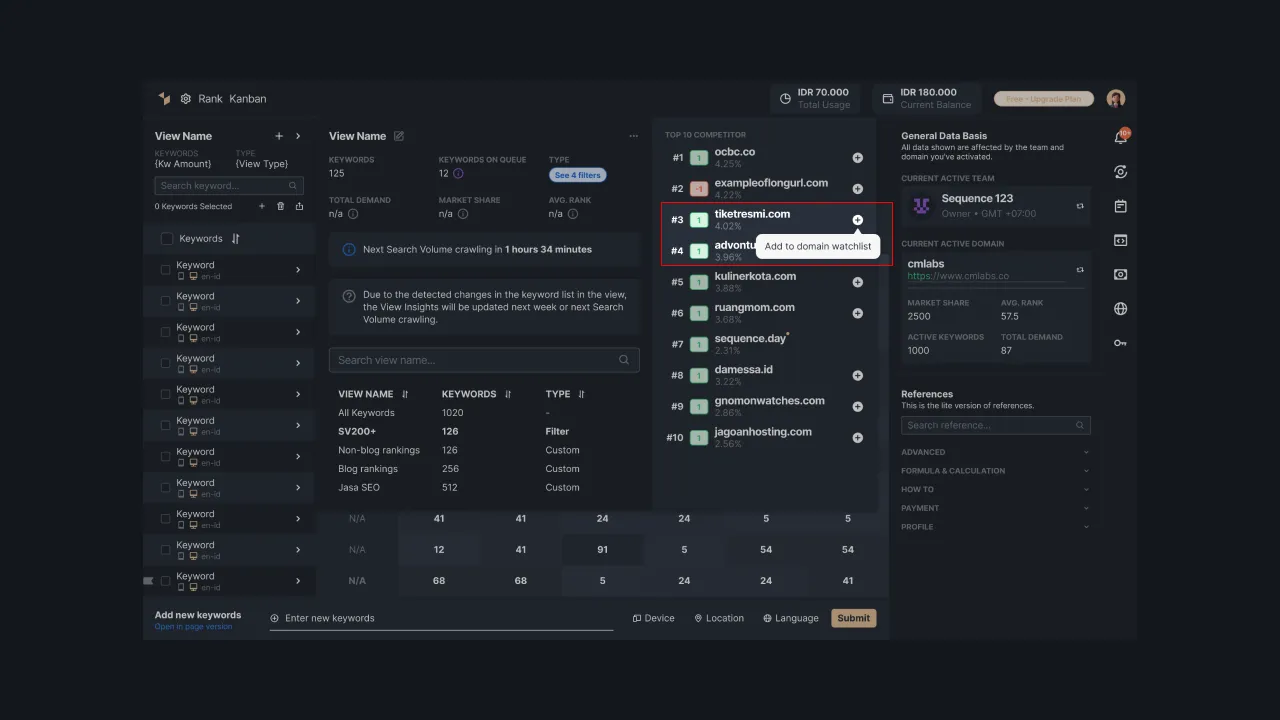 |
|---|
| Picture 1: Knowing true competitors through targeted keywords in Sequence View |
If you want to add those competitors’ websites to your watchlist, go to the Domain Watchlist feature and add them. This way, you will keep your eyes on them.
Define Comparison Criteria
The next step in website comparison analysis is to define the criteria to compare. We have discussed the criteria before, so you can set your priority. It will depend on your objective.
If you want to know the competitive landscape in the search engine, the criteria might be the market share and brand position based on their search performance. Here is how to get those data with Sequence Stats.
Open your Sequence account and go to your keyword list. If you have Views, then you can click the desired View to see your top competitor's market share.
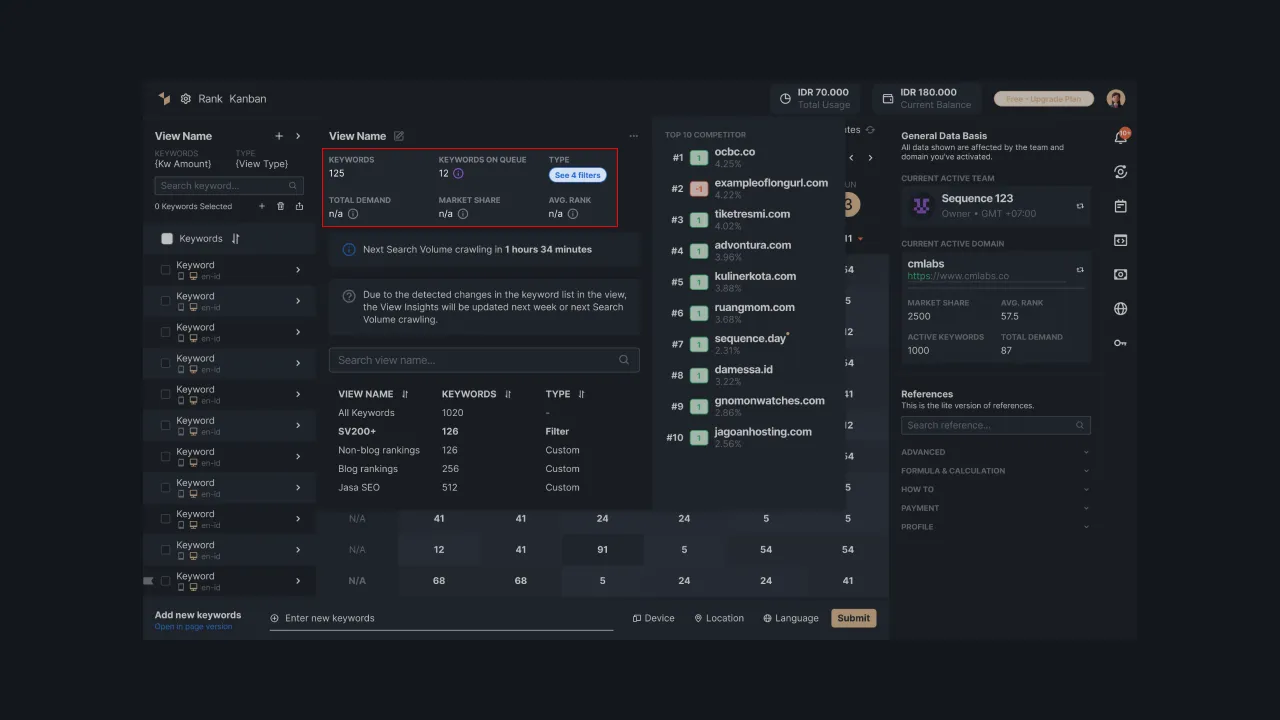 |
|---|
| Picture 2: View Insight that shows the competitors’ market share. |
For more detailed data about market share and brand position, you can go to the Stats feature and see the graphics that present the data.
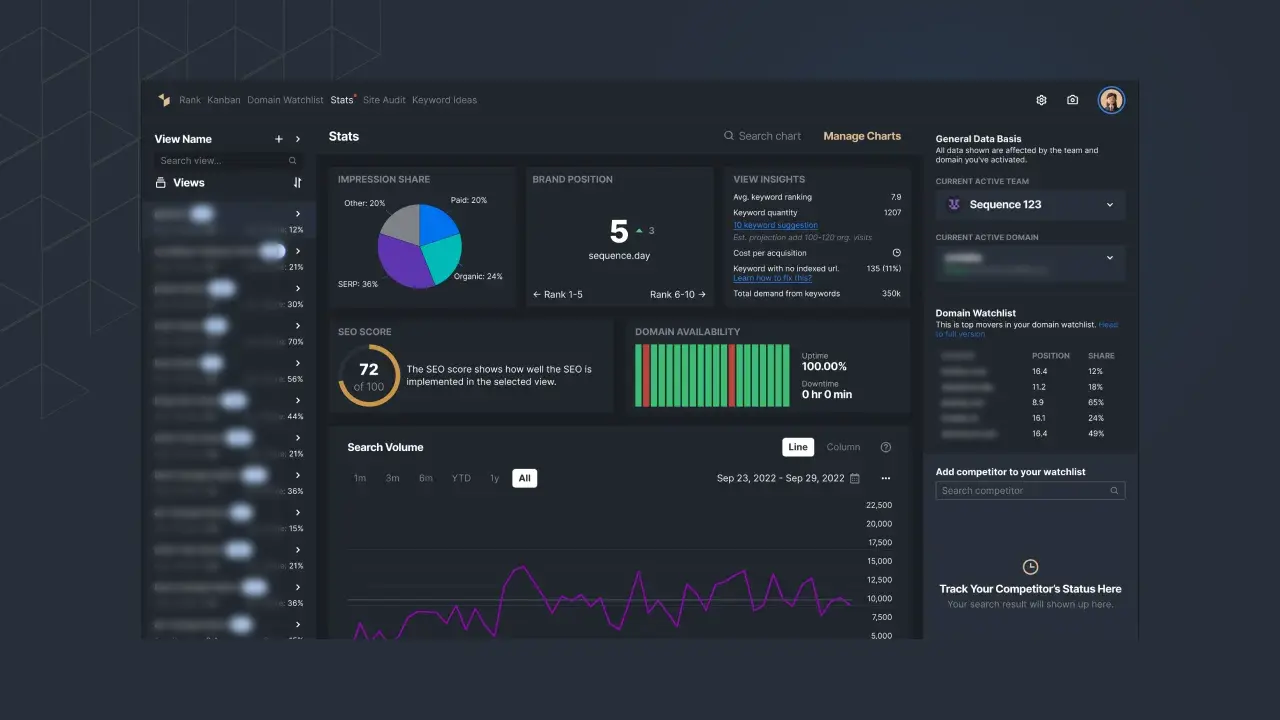 |
|---|
| Picture 3: Stats feature that shows various metrics data in Detail |
Scroll down to check the market share and brand position. Hover your mouse over data to show the competitor's position.
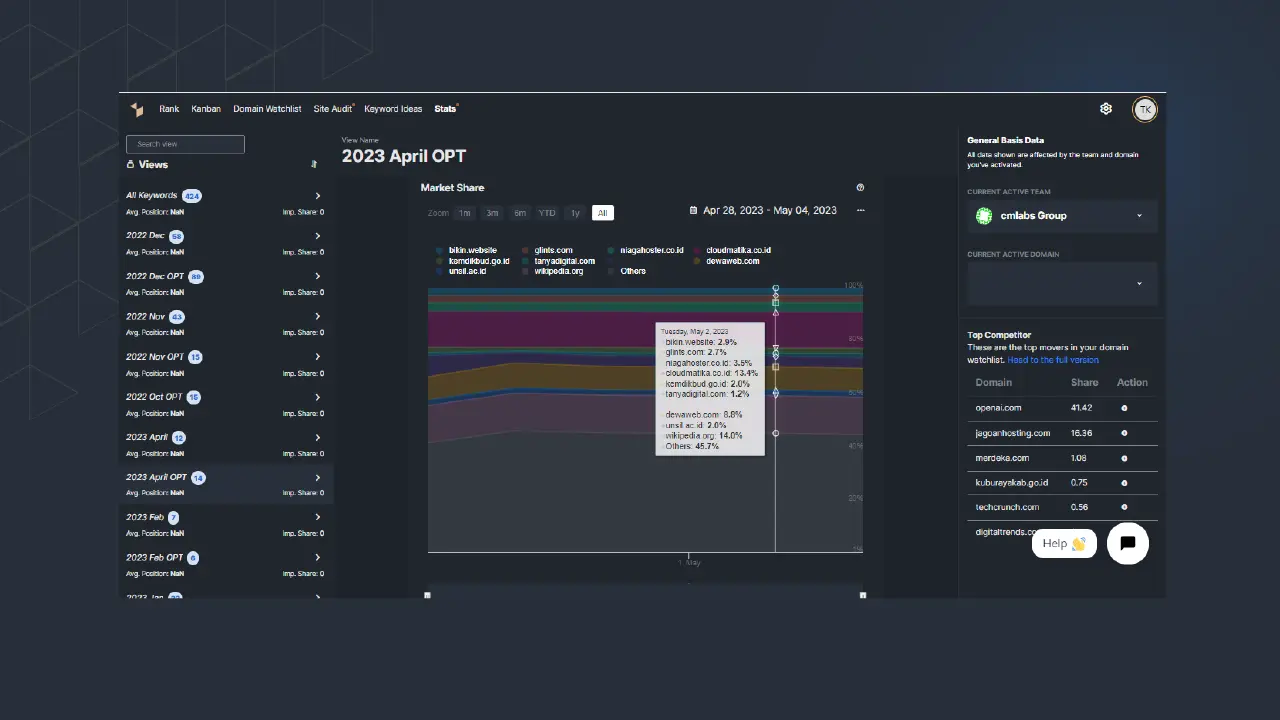 |
|---|
| Picture 4: Market share statistics recorded in Stats |
Analyze Content Quality
Assess the quality, relevance, and accuracy of the content on each competitor's website. Evaluate factors such as readability, grammar, depth of information, and how well the content aligns with the target audience's needs.
Next, compare the content strategy to yours. Analyze their top-performing pages and then compare them to your content and optimize it right away. Go to the Domain Watchlist detail and find the top keywords and top pages of your competitors.
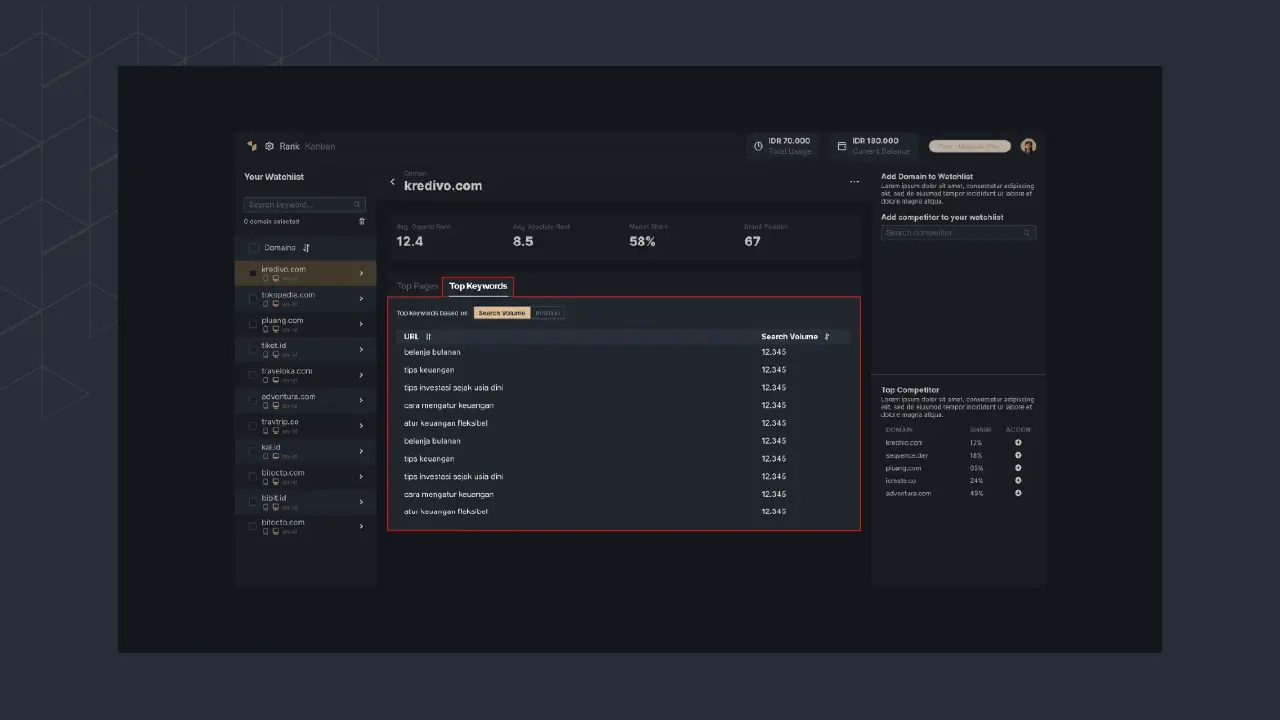 |
|---|
| Picture 5: top pages and top keywords of a certain competitor within the domain watchlist. |
Asses Their Search Performance
Assessing competitor search performance involves evaluating how well their websites rank in SERPs and analyzing the factors that contribute to their visibility and organic search traffic. Note the presence and rankings of your competitors' websites in the organic search results.
Then, compare the search performance of competitors against your own website. Identify areas where competitors are outperforming you and areas where you have a competitive advantage.
Draw Insights and Actionable Takeaways
Analyze the findings and insights to identify opportunities and actionable takeaways. Determine strategies to improve your search performance based on competitor analysis, such as optimizing on-page SEO elements, improving content quality, or acquiring high-quality backlinks.
Conclusion
In conclusion, conducting a thorough website comparison analysis is valuable for every business. By examining various aspects of multiple competitors' websites, we gain valuable insights to make informed decisions.
Whether we're selecting a website or understanding the competition, a thorough comparison analysis empowers us to make data-driven decisions and enhance our online experiences.
Make sure you use the right SEO website comparison tool to help you do the job.